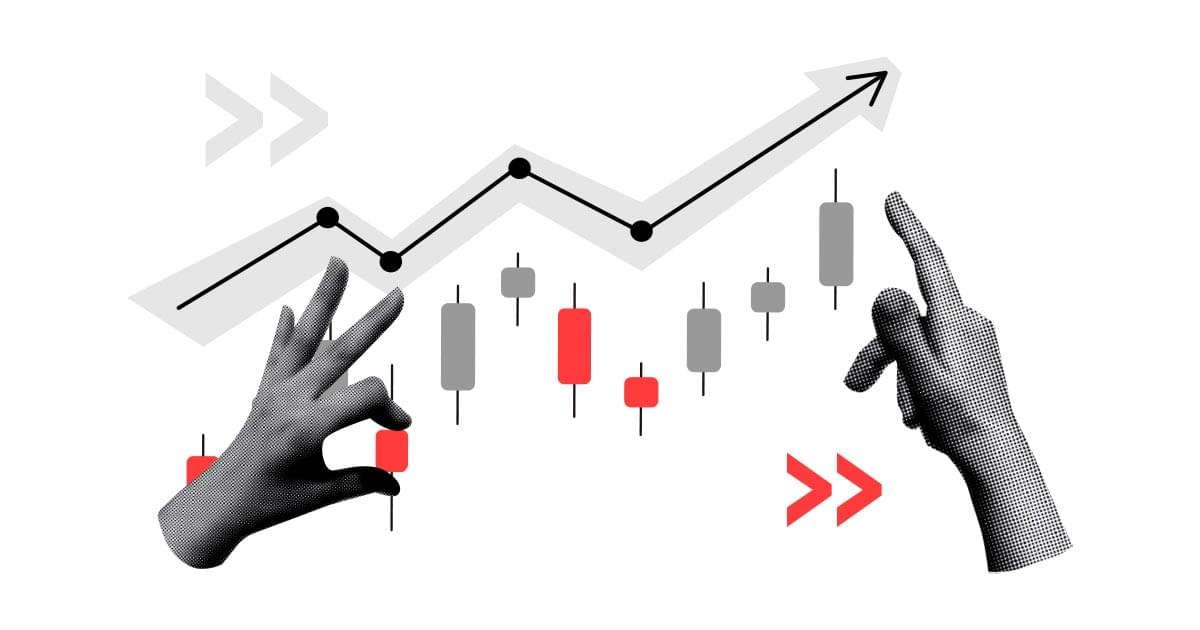The latest inflation reading from the United States turned out to be better than most analysts' forecasts, resulting in a sudden weakening of the dollar. Based on the current economic trends, let us analyse how the quotations of the main currency pairs against the dollar may evolve and what events may influence potential changes.
What influences inflation in the US?
The main driver of disinflation in the United States is declines in energy prices, particularly fuel commodities (down 36.6% year-on-year). Consequently, oil price quotations are a key factor influencing future inflation in this economy. CPI consumer inflation was just 3%, while core inflation, which excludes energy and food prices, fell to 4.8%. This means that the Federal Reserve (Fed) is moving ever closer to its long-term inflation target of 2%.

Source: Tradingeconomics
The fall in inflation has a significant impact on the Federal Reserve's (Fed) monetary policy, which is mainly focused on the labour market, followed by the stability of the US currency. A faster-than-expected decline in inflation could accelerate the end of the interest rate hike cycle. By the same token, this could be a factor for further weakening of the US dollar. If we look at interest rate expectations, we can be almost certain of another rate hike at the next meeting, i.e. next Wednesday (26 July) by 25 basis points. Indeed, the probability of such a move is 96%. The market expects the cycle of hikes to end after that.

A disinflationary race with Europe
While the main factor for the fall in inflation in the United States appears to be the discounting of oil, we learned from the latest inflation reading for the Eurozone of 6.1% that the main factors for the reduction in inflation on the old continent are falling prices for electricity, real estate (from 23.2% to 4.1%) and transport costs (from 14.6% to 0.1%). Inflation in the euro area is falling at a slightly slower rate than in the United States, with analysts expecting the next reading (on Wednesday) to be 5.5%. Should the data turn out to be lower than expected, this could lead to a fall in the EUR/USD pair. The deflation of the producer price index (PPI) seems to be leading the way. Its May reading was minus 0.5%, compared with 0.1% in the US.

Source: Tradingeconomics
However, long-term trends show a continuation of the upward trend on this currency pair. When analysing expected future government bond yields, which form the so-called bond yield curve reflecting future interest rate levels, one can see a divergence between investors' and analysts' forecasts. Investors estimate that there will be no further interest rate rises in the euro area by the end of the year. Analysts, on the other hand, predict at least two 25bp increases by September this year. Further interest rate rises by the ECB would lead to a strengthening of the euro against the US dollar.


Source: Conotoxia MT5, EURUSD, Daily
Zloty still dependent on EUR/USD
The quotations of the zloty depend to a large extent on the situation on the European currency market, as Poland is an export-based economy and its main trading partners are European countries (89% of exports). Consequently, any strengthening of the euro against the dollar causes the zloty to strengthen. The correlation of the USD/PLN currency pair against the EUR/USD pair is -0.84, which means a very strong correlation. Therefore, the quotations of the USD/PLN pair are mainly dependent on the EUR/USD pair, which shows the reversal of the trend on these two pairs at the same time.
Since the USD/PLN quotations are closely linked to the situation on the euro market, the upcoming European inflation data may weigh on the PLN exchange rate. If these readings turn out to be lower than expected, temporary increases on USD/PLN may be possible even above the level of 4.00. Nevertheless, the medium-term trend seems to be continuing.

Source: Conotoxia MT5, USDPLN, Daily
Yen sensitive to interest rate changes in the US
The Japanese yen is one of the currencies that is most sensitive to possible changes in US interest rates and central bank actions. With Japan remaining the only economy to maintain negative interest rates (minus 0.1%), the USD/JPY pair tends to rise when further increases are expected in the US. This is because capital tends to flow from places with low rates to places with higher rates. In the event that the trend of rising interest rates in the US stops, it is possible that the first reductions would start to be priced in and the trend on USD/JPY might change.

Source: Conotoxia MT5, USDJPY, Daily
However, the Bank of Japan (BoJ) does not seem to have been unaffected by the Fed's actions, selling off foreign currency reserves en masse since June last year, leading to a decline in the USDJPY pair.

Source: Tradingeconomics, Japan's foreign exchange reserves
Will continued high inflation in the UK strengthen the pound?
The UK is currently struggling with one of the highest levels of inflation among developed economies. It is not heartening to see the latest reading for May, which showed inflation remaining at 8.7%. Analysts are now predicting a symbolic drop in inflation to 8.2%. If inflation were to turn out to be below expectations, this could result in a downward correction on the GBP/USD pair. Nevertheless, the overall upward trend, even above the 1.15 level, appears to continue.

Źródło: Conotoxia MT5, GBPUSD, Daily
Grzegorz Dróżdż, CAI MPW, Market Analyst of Conotoxia Ltd. (Conotoxia investment service)
Materials, analysis and opinions contained, referenced or provided herein are intended solely for informational and educational purposes. Personal opinion of the author does not represent and should not be constructed as a statement or an investment advice made by Conotoxia Ltd. All indiscriminate reliance on illustrative or informational materials may lead to losses. Past performance is not a reliable indicator of future results.
CFDs are complex instruments and come with a high risk of losing money rapidly due to leverage. 73.02% of retail investor accounts lose money when trading CFDs with this provider. You should consider whether you understand how CFDs work and whether you can afford to take the high risk of losing your money.


